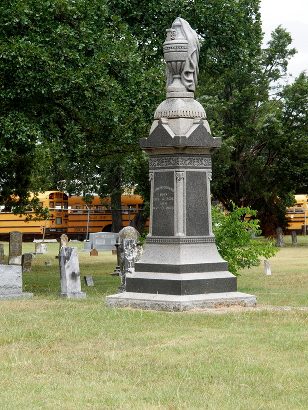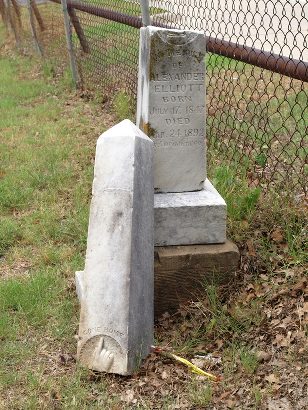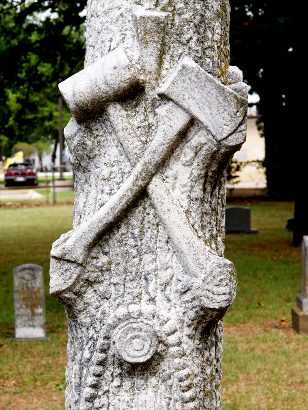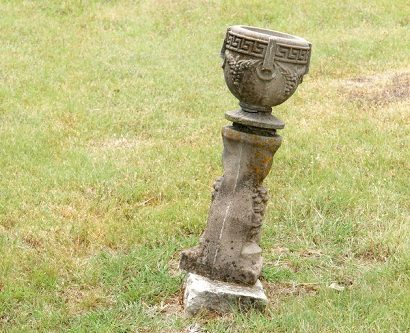Sowers, Texas, Dallas County Ghost town. (original) (raw)

Sowers Cemetery
Photo courtesy David Cole, 2010
History in a Pecan Shell
The community dates from the late 1840s when settler E. D. Sowers opened a store on the site. He applied for a post office in 1881 under his name. The community had been known as Sower�s Store prior to the official post office designation.
In the mid 1880s the community had a population of seventy five residents served by a blacksmith, doctor and pharmacist. The post officer closed in 1905 despite an increase in the number of residents to 121.
The number of businesses shrank to just three during the Great Depression and the population was still reported as 30 in the mid 1950s. It is now a part of Irving.
"My GPS actually indicated I was in Sowers so perhaps it survives as some legal entity." - David Cole, October 09, 2011
Historical Marker:
Irving ISD Special Education Annex
3207 W. Pioneer Dr., Irving
Sowers Community
By 1856, Edmund D. and Freelove Sowers, who came to Texas from Illinois, owned land in this vicinity. Along with their neighbors, including Jacob and Henry Caster, and William and Lucinda Haley, they farmed, hunted game and cut timber. Ed Sowers also served as a blacksmith. Sowers opened a general store on his property in the late 1870s, and a small business district developed around it.
As additional families came to the area, Sowers donated land that was added to an adjacent burial plot to form the community cemetery. In 1881, he applied for a mail route and opened a post office in his general store. During that same time, Sowers built a schoolhouse for local children. In the 1880s, several physicians came to the Sowers community, including William Wilson, Alfred Gregory and Daniel Webster Gilbert, who had a local drugstore. Dr. John Haley, a Sowers native who would later serve as mayor of Irving, began his medical practice here in 1897. With medical services and the post office, the Sowers community served as a center for area farming communities. Ed and Freelove Sowers held annual Fourth of July picnics and other festivals, inviting families from the region to camp, dance, compete in baseball games and enjoy barbecue dinners.
Despite the growth of nearby Irving, the Sowers community, with strong foundations in the dairy and poultry businesses, survived until the 1950s. The Sowers School consolidated with Irving schools in 1955, and Irving annexed the community itself in 1954 and 1956. Today, the businesses and homes are gone. Only the cemetery remains as a link to the Sowers community.
(2003)
Sowers Cemetery

Edmund Sowers
Oct. 4, 1826 - May 13, 1909
Photo courtesy David Cole, 2010
Historical Marker: 3115 W. Pioneer Dr., Irving
Sowers Cemetery
Burial plot was begun in 1868, when a woman and her daughter, whose names have been lost, were interred on the land of Seveir Smalley, a local landowner. In 1874, Edmund D. Sowers (1826 - 1909) and his wife, Freelove, donated one adjoining acre as a public burial ground.
In his family lot, Sowers had an impressive monument erected, using proceeds from sale of 65 acres of his land. Additional property was donated by Otis Brown (1879 - 1958). Many pioneer settlers of this area are buried here. Cemetery is maintained by Sowers Cemetery Association.
1973

"BABY"
Photo courtesy David Cole, 2010

Jonathan Story
Photo courtesy David Cole, 2010
"'Story' is a major road in Irving and sure enough, there are people with that name in the cemetery." - David Cole

"Gone Home"
Photo courtesy David Cole, 2010

Broken Tombstone
Photo courtesy David Cole, 2010

Photo courtesy David Cole, 2010

Woodsmen of the World Monument
Photo courtesy David Cole, 2010

Photo courtesy David Cole, 2010

Broken Tombstone
Photo courtesy David Cole, 2010
Texas Escapes, in its purpose to preserve historic, endangered and vanishing Texas, asks that anyone wishing to share their local history, stories, landmarks and recent or vintage photos, please contact us.